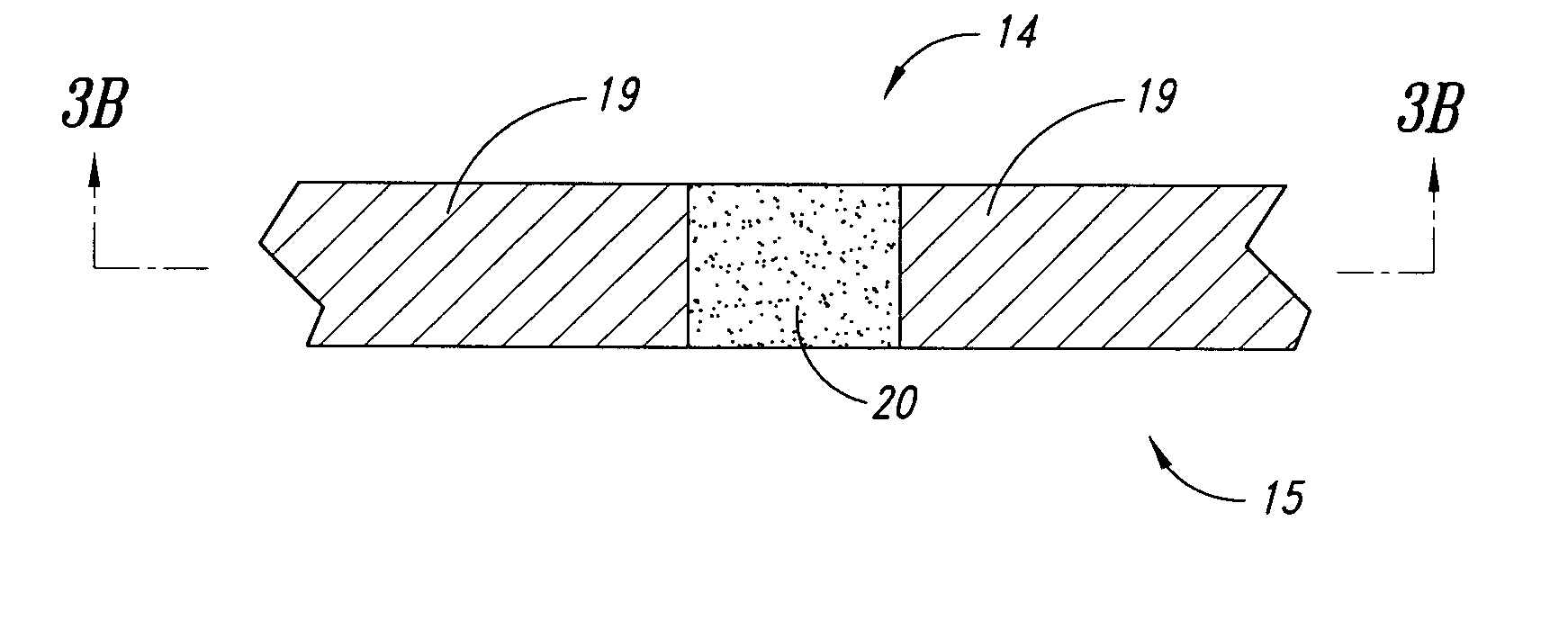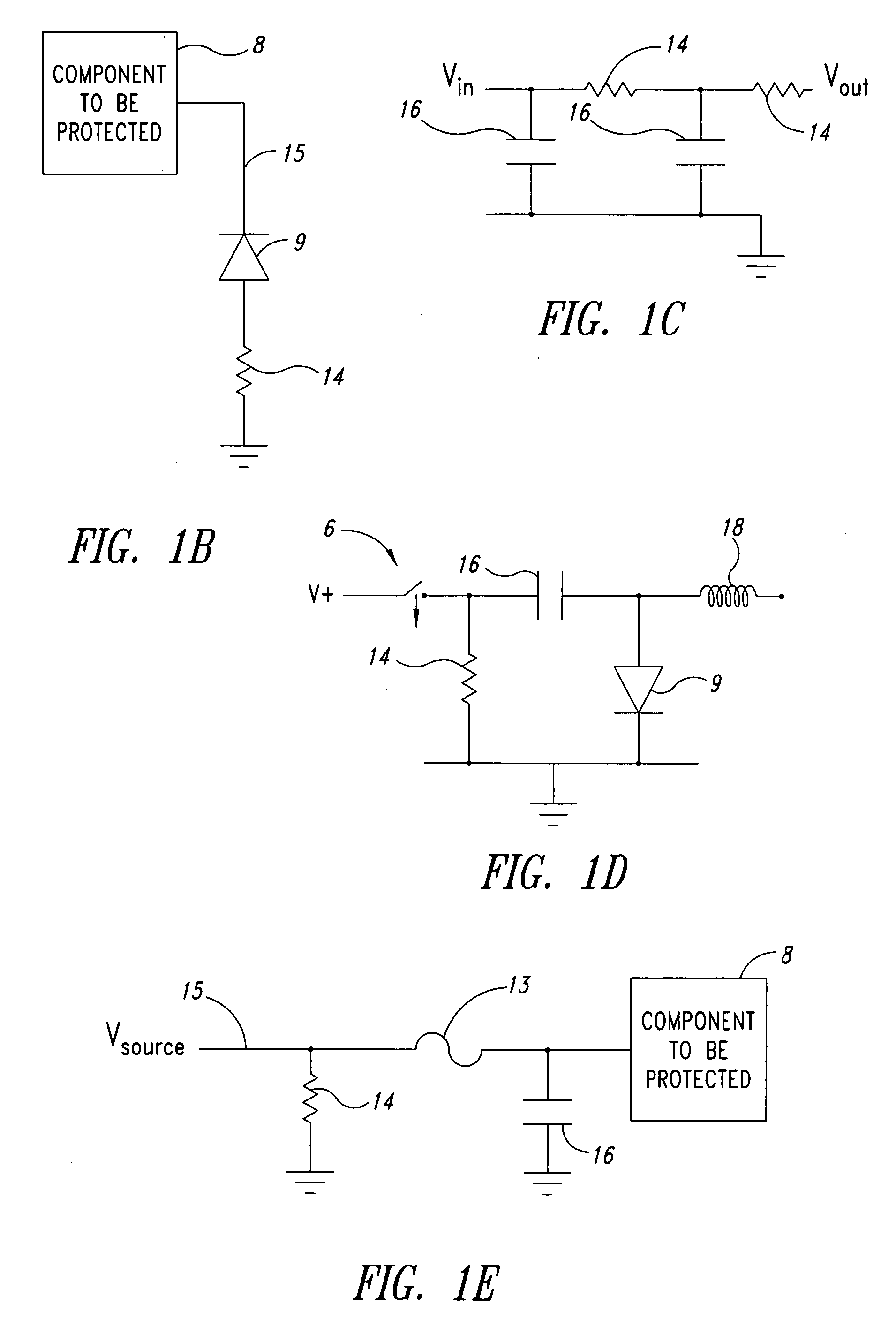[0098] A variety of materials can be used for the substrate, presenting a surface for disposition of the seed layer, including
electrically conductive, semiconductive, or insulative materials. The substrates may include metals, such as thin stainless steel sheets. They may also include prefabricated
epoxy resin circuit boards. The substrate may be a
semiconductor of any selected desired choice, such as
silicon,
gallium arsenide,
germanium, or other material. Other acceptable substrates include plastics,
polyimide layers, a flexible
polymer sheet, an insulator,
ceramic, laminate substrates, or multilayer substrates composed of any of the other variety of other materials. One
advantage of the present invention is the ability to form an electrical circuit on a wide variety of acceptable substrates. One shortcoming of the prior art is the difficulty of forming electrical circuits on certain types of substrates. While
epoxy resins are well developed for use as substrates, there is considerably more difficulty in the art using certain types of plastics, glasses, ceramics, or insulators as substrates. The substrate may be a flexible
organic layer. For example, it may be a
fiber, fabric, cloth, or
plant, including a living
plant, such as the leaf of a tree.
Current technology does not permit the formation of electrical circuits on living plants based on the need to
expose to harsh chemicals and high temperature steps. The present invention permits the formation of electrical circuits at
room temperature, thus permitting the formation the electrical circuit on a much wider range of substrates than is possible in the prior art. Any substrate on which a pattern may be printed is
usable as a substrate in the present invention, thus including practically all possible materials.
[0099] The substrates can include multilayer substrates. The substrate can be, for example, glass,
quartz,
oxide or
nitride material, plastic,
ceramic,
semiconductor such as
silicon,
germanium, and the like, conductor such as aluminum, composites of materials including metals and semiconductors, and multilayer
coating of any of these materials.
[0100] The substrates are typically those where a
metal film would be grown, including for example Ta, TaN, Ti,
TiN, TiW, Mo, Cr,
silicon oxide (including
silicon dioxide),
silicon nitride,
silicon oxynitride. These substrates can be, for example, barrier materials which prevent
copper diffusion. The substrates may be cleaned, prepared, or coated with a
oxide or other substance. In a preferred embodiment, the
system is used where the
peptide is directly bound without any
coating on the substrate in order to direct the
metal film directly on the desired layer.
[0101] Substrates also can be selected for usefulness in displays including
liquid crystal displays. Deposition of seed layers on glass substrates is described in U.S. Pat. No. 6,887,776, which is hereby incorporated by reference in their entirety. Glasses include undoped
silica glass (USG), phosphorous doped glass (PSG),
boron-phosphorous doped glass (BPSG), soda-
lime glass,
borosilicate glass,
sodium borosilicate glass, alkali-
metal borosilicate,
aluminosilicate glass, aluminoborosilicate glass, alkaline earth aluminoborosilicate glass, alkaline earth-metal aluminoborosilicate glass, and combinations thereof. Printing
[0102] The present invention permits the printing to be carried out by any currently known printing technique. The printing technique which may be used includes
inkjet printing.
Inkjet printing is well developed in the art, and numerous solutions having different viscosities have been adapted to
inkjet printing. lnkjet printing is also very versatile in providing a wide range of patterns to be printed having various widths and dimensions easily controllable by
software. Use of
inkjet printing provides a substantial
advantage over current techniques for printing circuit boards. With the use of an inkjet printer, the printer can be driven by appropriate
software electronics to form the desired pattern. Thus, a
mask layer followed
lithography processing is not necessary with the present invention. The substrate 12 on which the pattern is to be formed can be simply printed using inkjet printing—in a desired pattern at substantially lower costs than is currently permitted using the expensive masks, exposed etch and treat techniques common in the art today. Other types of printing may also be used. For example, gravure printing, which has advantages for certain substrates and for forming selected patterns.
Laser printing,
thermal transfer,
laser induced
thermal transfer, flexo printing, and
offset printing may also be used. The present invention is also useful for all methods of
lithography.
[0103]
Inkjet printing also permits different seed layers to be printed at the same time using standard inkjet printing techniques. This will assure self-alignment of the various seed layers. This is accomplished as follows. It is known to print three or four colors in a single printing with an inkjet printer, such as red, blue, yellow, and sometimes also black. This is carried out today with a single ink
cartridge having the three or four inkwells therein.
 Login to View More
Login to View More 


